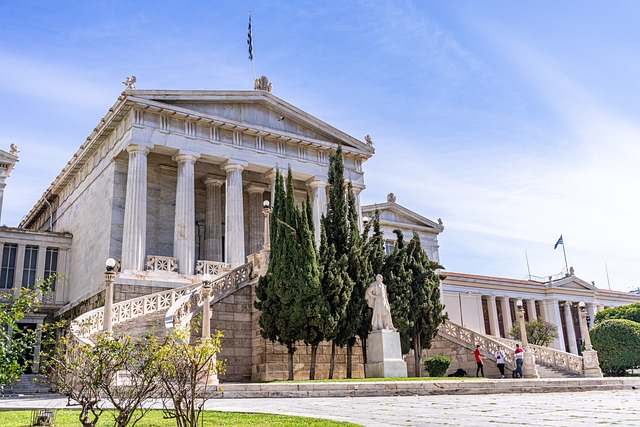Eugene, Oregon's fascinating journey begins with its peaceful founding in 1852, propelled by fertile lands. Its transformation from a farming community to a vibrant cultural hub was significantly accelerated by the University of Oregon, established in 1873. The university's influence is evident in Eugene's architectural styles, cultural diversity, and historical landmarks like Old Town and Willamette Riverfront. Key events, including the railroad arrival in 1872 and urban development, have shaped Eugene's rich history, fostering a thriving art scene and public spaces. Today, Eugene boasts a dynamic blend of academic excellence, cultural evolution, and historic charm, attracting global visitors.
Discover the captivating journey of cultural evolution in Eugene, Oregon. From its peaceful founding and subsequent growth over time, to the profound influence of the University of Oregon on its intellectual and cultural landscape, this vibrant city has transformed into a bustling metropolis. Explore how Eugene’s urban development—from small town roots to a thriving center—has been complemented by historical landmarks and an evolving transportation network, weaving together a rich narrative.
- Eugene Founding History: A Peaceful Beginning and Growth Over Time
- University of Oregon: Shaping the Intellectual and Cultural Landscape
- Urban Development in Eugene: From Small Town to Vibrant City
- Historical Landmarks and Transportation Evolution: Weaving Together Eugene's Story
Eugene Founding History: A Peaceful Beginning and Growth Over Time

Eugene, Oregon’s vibrant cultural center, boasts a fascinating founding history that has propelled its growth and shaped its unique character. Established in 1852, this city emerged from a peaceful beginning as a small settlement with a vision for a prosperous future. The area was initially drawn to by settlers due to its fertile lands, ideal for agriculture, which set the foundation for its economic development. Over time, Eugene evolved from a humble farming community into a bustling urban center.
The establishment of the University of Oregon in 1873 played a pivotal role in the city’s transformation. The university not only brought academic excellence but also contributed to Eugene’s cultural evolution by attracting diverse populations and fostering intellectual growth. Parallel to its academic development, Eugene’s urban landscape underwent significant changes. The expansion of transportation networks, including railroads and highways, connected the city to broader regions, facilitating trade and migration. Historical landmarks like the Old Town district and the Willamette Riverfront reflect this journey, showcasing the evolution from a peaceful founding to a thriving cultural hub.
University of Oregon: Shaping the Intellectual and Cultural Landscape

The University of Oregon has played a pivotal role in shaping the intellectual and cultural landscape of Eugene since its founding in 1873. As one of the oldest institutions of higher learning in the state, it has been instrumental in driving urban development and fostering cultural evolution. The university’s influence extends beyond academia, with its history deeply intertwined with the city’s transportation network and historical landmarks. Over time, it has contributed to Eugene’s vibrant culture by attracting diverse communities, fostering creative exchanges, and promoting progressive ideas.
The University of Oregon’s campus itself serves as a testament to the city’s architectural evolution, featuring a mix of historic and modern structures. Its strategic location in downtown Eugene has made it a cultural hub, with numerous events, exhibitions, and performances taking place on its premises. Moreover, the university’s research initiatives have had a tangible impact on local communities, addressing environmental concerns, promoting economic development, and preserving Eugene’s rich history as a key element of its urban identity.
Urban Development in Eugene: From Small Town to Vibrant City

Eugene’s transformation from a small town to a vibrant city is a testament to its rich history and diverse cultural evolution. Established in 1846, the city has witnessed significant growth, particularly with the arrival of the railroad in 1872 and the founding of the University of Oregon in 1873. The university has played a pivotal role in shaping Eugene’s identity, fostering academic excellence and contributing to its cultural diversity. Over time, urban development in Eugene has evolved, incorporating modern amenities while preserving historical landmarks.
The city’s transportation history has been instrumental in its growth. The construction of highways and the expansion of public transportation options have connected Eugene to nearby cities, enhancing its appeal as a livable metropolis. Today, Eugene boasts a thriving cultural scene, with diverse art galleries, museums, and performing arts venues that reflect its dynamic urban development. These historical and contemporary elements combine to create a unique atmosphere that defines Eugene’s cultural evolution.
Historical Landmarks and Transportation Evolution: Weaving Together Eugene's Story

Eugene’s rich tapestry of cultural evolution is deeply intertwined with its historical landmarks and the evolution of transportation.
Since its founding in 1846, the city has witnessed significant urban development, shaped by key events such as the arrival of the railroad in 1872, which connected Eugene to larger markets and fueled economic growth. The establishment of the University of Oregon in 1873 further played a pivotal role, attracting scholars and students from around the world and fostering an environment of intellectual curiosity that continues to thrive today. These foundational elements laid the groundwork for Eugene’s cultural landscape, where art galleries, museums, and vibrant public spaces flourish, reflecting the city’s dynamic and ever-changing identity.
